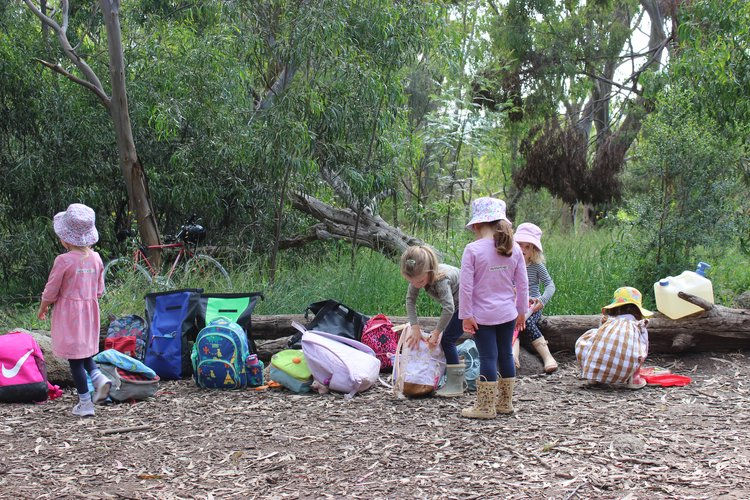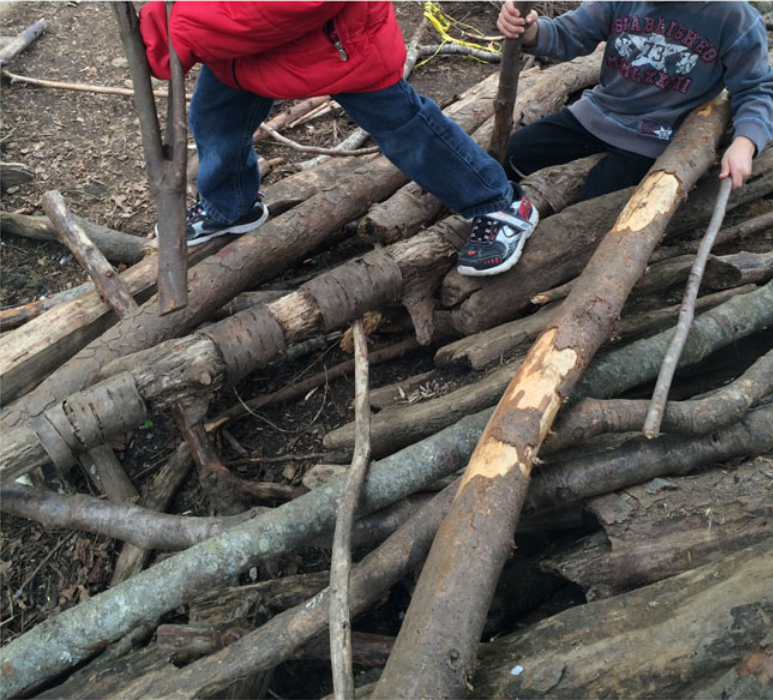Challenges of Nature Based Learning
- celesteanndesigns
- Oct 2, 2022
- 4 min read
Updated: Oct 4, 2022
When it comes to Nature Based Learning, there are several challenges, mostly around safety concerns and regulations. Researchers have recorded resistance from teachers and parents (Renick, 2009; Coleman & Dyment, 2013), and found that at times the risks or practicality of natural elements and weather can be a hindrance to the communication between learner and teacher (Kandemir & Sevimli-Celik, 2021). In addition, researchers question whether the stress reduction of outdoor classrooms on learners could limit opportunities for practise of self regulation (Ulset et al., 2017).
Learner Perspective: "I like to go to the forest and have lots of hikes. And play in the snow on the hike. And go in the shelters. And check out trees. And paint on bark. And draw on bark. And painting leaves. And going to the creek. And sliding. And I like to go to the creek where you can slide and fish. And the climbing rock. I like to climb on it and I like to build houses with it" (Coe, 2016).

Note. Children in an outdoor classroom, (Westgarth Kindergarten, n.d.).
Researchers report expressions of concern from teachers and parents in regard to the safety of Naure Based Learning, particularly outdoor classrooms (Coleman & Dyment, 2013; Little & Sweller, 2015; Renick, 2009) and at times teachers were reluctant to allow use of natural elements due to these safety concerns (Coleman & Dyment, 2013). Kandemir & Sevimli-Celik (2021) found that during outdoor play with natural elements, teachers were concerned with it being impractical to allow children to get dirty clothes and shoes and would intervene in children’s play because of this. They also found that child-teacher interactions outdoors were dominated by teachers concerns for children possibly getting dirty, injured, or sick from cold weather. If concerns about nature are diminishing the positive interactions between learners and teachers, could this have a negative impact on learning? In contrast, cold weather is not always a concern to teachers and parents if children are dressed appropriately for the weather (Coe, 2016).
Another safety concern raised by some teachers is that natural features such as trees make it difficult to comply with regulatory requirements (Little & Sweller, 2015), in relation to equipment height and fall zones. Ulset et al. (2017) question whether the teachers’ feedback and assessment of the children’s attention might be influenced by the positive effects of working outside on their own mood, attention and impulsivity, which could lessen the difficulty of dealing with inattentive behaviour. Renick (2009) showed feedback indicating that teachers may not be motivated to take children outside in cold weather and may be uncomfortable. It is possible that the inverse effect would then be a possibility; that teachers mood could be negatively affected by being outdoors.
An indoor setting could give learners a greater opportunity to practise self-regulation and effortful concentration, that may be beneficial to them in future educational and work settings, and limiting these opportunities could negatively affect learners' attention (Ulset et al., 2017). Although research shows that the use of natural elements as loose parts can provide open-ended learning covering a wide range of curriculum (Speldewinde and Campbell, 2021; Miller et al., 2020), the research did not cover whether the same result could be achieved with non-natural loose parts such as nuts and bolts, string, cardboard tubes etc.
As Educational Designers we can examine these findings to inform our designs. It is possible that designs including natural elements or in an outdoor setting will be met with resistance. It is important to consider whether these ideas are helpful to the people we are designing for, and whether the benefits can be replicated in a way more relevant to them; or as Jordan and Chawla questioned, "are there situations when NBL is more effective and when classroom-based instruction is more effective?" (Jordan & Chawla, 2019, Table 1) . One question that could be asked is: do the teachers require NBL specific training for this pedagogy to be successful? Addtionally, with the many pedagogies that NBL overlap with (place-based learning, risky play, forest kindergarten/bush kinder as outlined in the previous post), is the outcome we are looking for truly lying in NBL, or is it covered more thoroughly by one of these?
References
Coe, H.A. (2016). Embracing risk in the Canadian woodlands: Four children’s risky play and risk-taking experiences in a Canadian Forest Kindergarten. Journal of Early Childhood Research, 15(4), 374–388 https://doi.org/10.1177/1476718X15614042
Coleman, B. & Dyment, J. (2013). Factors that limit and enable preschool-aged children’s physical activity on child care centre playgrounds.Journal of Early Childhood Research, 11(3), 203–221. https://doi.org/10.1177/1476718X12456250
Jordan, C. & Chawla, L. (2019). A Coordinated Research Agenda for Nature-Based Learning. Frontiers in Psychology,10(766). https://doi.org/10.3389/fpsyg.2019.00766
Kandemir, M. & Sevimli-Celik, S. (2021). No muddy shoes, no dirty clothes! examining the views of teachers and parents regarding children’s outdoor play and learning, Journal of Adventure Education and Outdoor Learning. https://doi.org/10.1080/14729679.2021.2011339
Little, H. & Sweller, N. (2015). Affordances for Risk-Taking and Physical Activity in Australian Early Childhood Education Settings. Early Childhood Education Journal, 43(4), 337–345. https://doi.org/10.1007/s10643-014-0667-0
Miller, N., Kumar, S. & Pearce, K. (2020). The outcomes of nature-based learning for primary school aged children: a systematic review of quantitative research. Environmental Education Research, 27(8), 1115–1140. https://doi.org/10.1080/13504622.2021.1921117
Renick, S.E. (2009). Exploring early childhood teachers’ beliefs and practices about preschool outdoor play: a case study. [Doctoral dissertation, Graduate School of the Texas Woman’s University]. https://www.proquest.com/dissertations-theses/exploring-early-childhood-teachers-beliefs/docview/305130553/se-2
Speldewinde, C. & Campbell, C. (2021). Bush kinders: enabling girls’ STEM identities in early childhood. Journal of Adventure Education and Outdoor Learning. https://doi.org/10.1080/14729679.2021.2011337
Ulset, V., Vitaro, F., Brendgen, M., Bekkhus, M. & Borge, A.I.H. (2017). Time spent outdoors during preschool: Links with children's cognitive and behavioral development. Journal of Environmental Psychology, 52, 69–80. https://doi.org/10.1016/j.jenvp.2017.05.007
Westgarth Kindergarten (n.d.). [Photograph]. https://www.wgkg.vic.edu.au/about-us-1


Comments